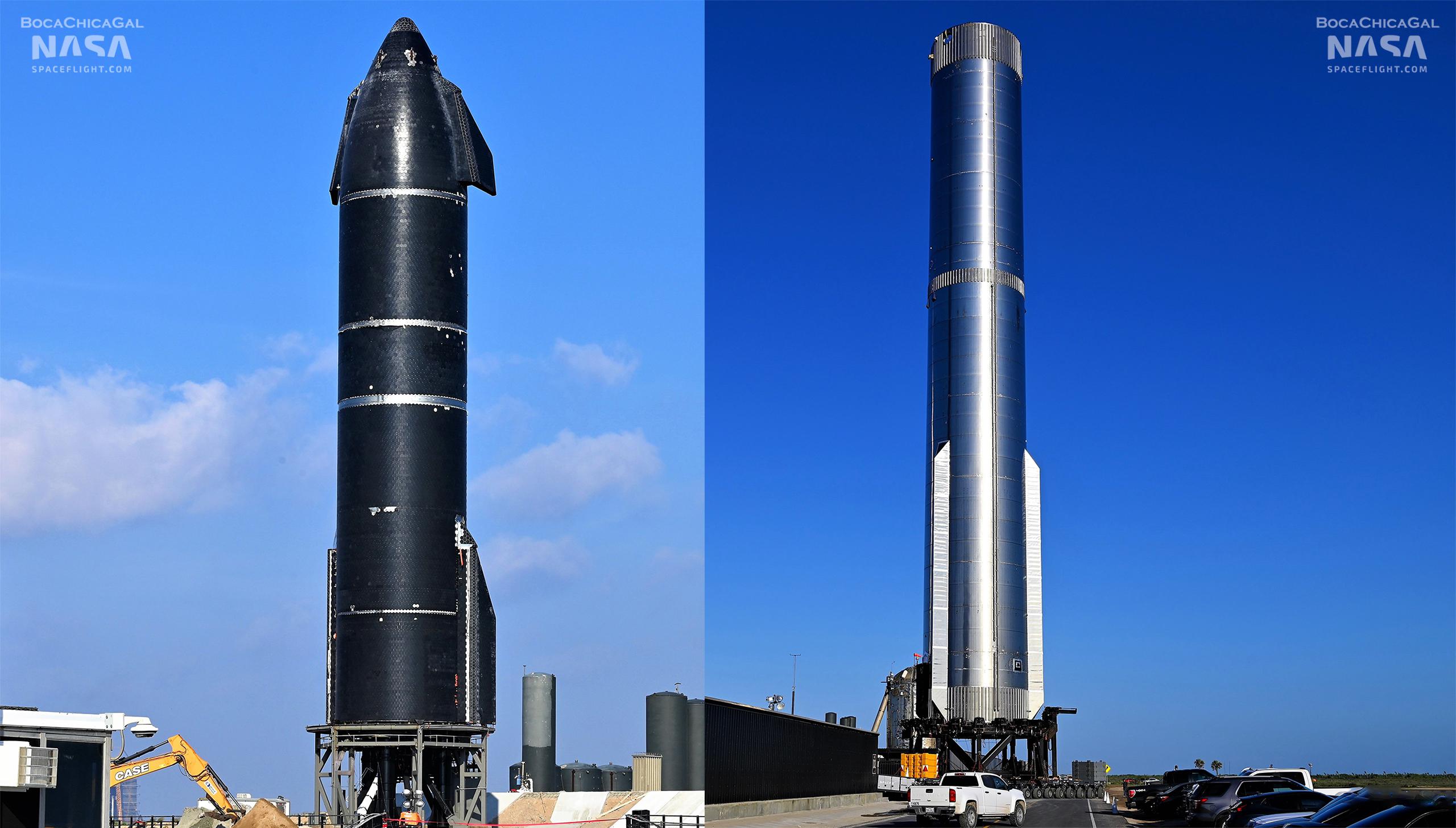
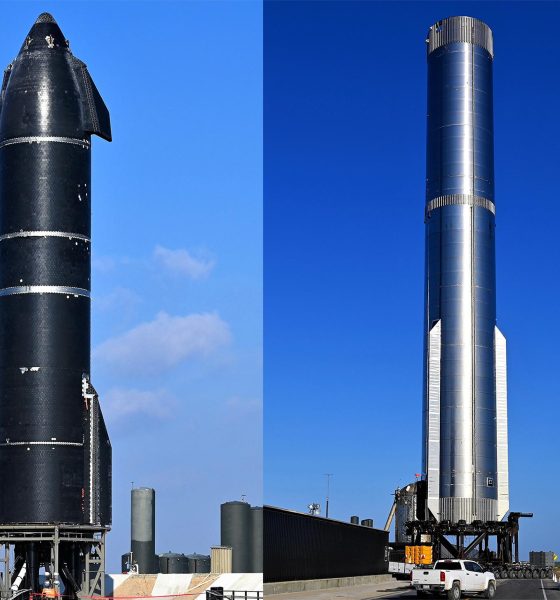
News
SpaceX CEO Elon Musk claims Starship will be ready for first orbital launch in July
CEO Elon Musk claims that SpaceX could be ready to attempt Starship’s first orbital launch as early as July.
While SpaceX has been making slow and steady progress preparing the Starship upper stage and Super Heavy booster nominally assigned to that launch debut, the odds that even just one of those two stages will be fully qualified for flight before the end of July are quite small. Musk’s claims about what will happen after that rocket is ready are even loftier.
According to Musk, after SpaceX is done preparing a Starship and Super Heavy booster for their inaugural orbital launch attempt sometime “next month,” the company will have a second ship and booster pair “ready to fly in August” and another pair every month after that. If SpaceX rapidly completes the dozens of environmental mitigations assigned to it on June 13th and receives an FAA license or experimental permit for orbital Starship launches, the company does theoretically have permission for five orbital launches out of South Texas in 2022, but the same is also true for all 12 months of 2023.
However, there is very little evidence that SpaceX is on the cusp of being able to complete a new orbital-class Starship and Super Heavy booster every month. While SpaceX is working on future Starships and is almost done assembling a second orbital-class Super Heavy booster, the pace of that work appears to be about the same as it’s been for the last 12+ months. Yes, SpaceX is almost done stacking Booster 8 and has begun stacking Ship 25. Sections of Ship 26, Ship 27, and Booster 9 have also been spotted at Starbase. But SpaceX has been unable to finish stacking Booster 8 over the last few months it’s been focused on Ship 24 and Booster 7.
Ship 24 and Booster 7, meanwhile, are making good progress but are still incomplete. Both recently completed several mostly successful cryogenic and structural proof tests and returned to SpaceX’s assembly bays, where workers have begun installing Raptor engines and applying finishing touches.
After a month of work, it appears that Super Heavy B7 may finally be preparing to return to Starbase’s launch site on Thursday, June 16th. Since it returned to the factory on May 14th, SpaceX has been installing 33 new Raptor 2 engines, applying thermal protection to those engines, buttoning up the booster’s aft end, installing control surfaces known as grid fins, and completing a few other unfinished tasks. If all of that work is complete when it rolls out again, B7 could kick off the next phase of its qualification testing – wet dress rehearsals and static fires – shortly after returning to the orbital launch site.
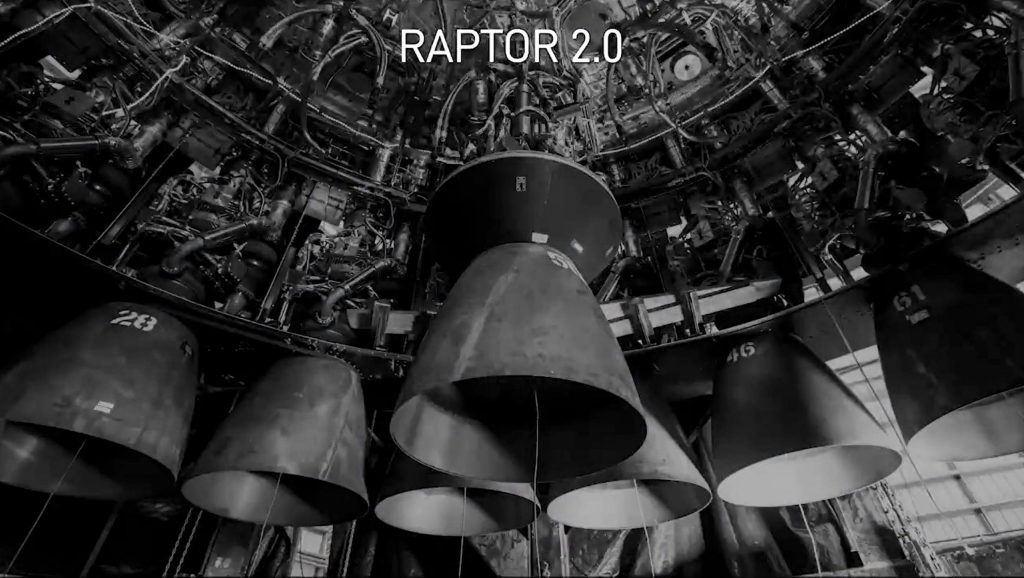
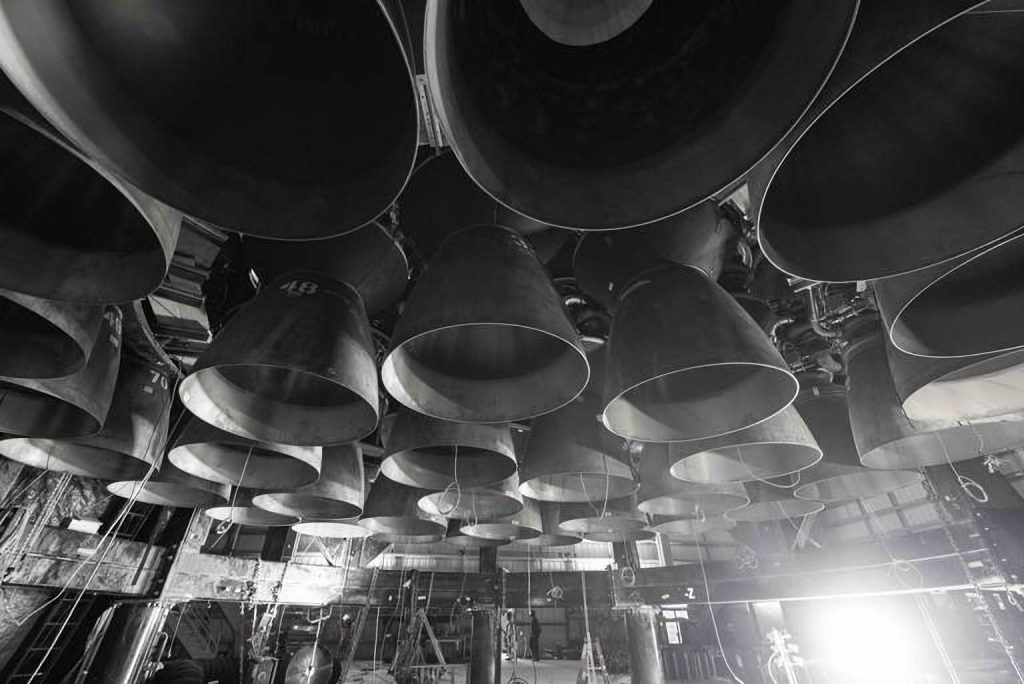
SpaceX has never attempted a full-scale Super Heavy wet dress rehearsal, in which the largest rocket booster ever built will be fully filled with more than three thousand metric tons of flammable cryogenic propellant and put through a simulated launch countdown. SpaceX has also never come close to conducting a full Super Heavy static fire, though it did fire three outdated Raptors on an outdated booster prototype a single time in July 2021.
Ship 24’s position is slightly more favorable, as it only needs six Raptor 2 engines installed. Thanks to Ship 20, which successfully completed several wet dress rehearsals and several static fires that ignited all six engines, Ship 24 will also be heading into terrain that is slightly less uncharted. Still, the Starship’s heat shield needs several hundred more tiles installed, one of four flap aerocover ‘caps’ is missing, and thermal protection will need to be installed around its Raptors.
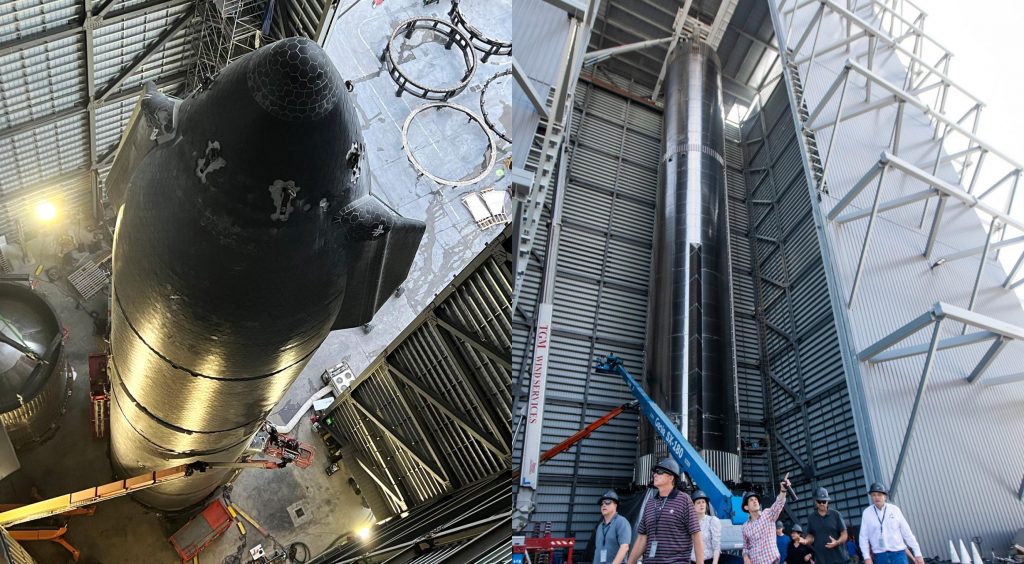
Once Booster 7 and Ship 24 are both fully outfitted and installed on their respective test stands, there’s still little reason to believe that either prototype has any chance of completing all the tests needed for flight qualification by the end of July. In fact, for B7 and S24 to be truly ready for flight before the end of July, they’d likely need to wrap up qualification testing well before the end of the month to conduct another series of tests after the pair is fully stacked. If SpaceX does not proceed with at least some degree of caution and a plan to thoroughly test both stages before a launch attempt, it will significantly increase the risk of catastrophic launch pad damage that could easily take half a year or more to fix.
More realistically, it’s reasonable to assume that Ship 24 and Booster 7 will both run into some minor issues during their first wet dress rehearsals and static fire tests, possibly requiring Raptor replacements or even minor repairs. Instead of a few weeks, serious flight qualification could take a few months. It’s also arguably far likelier that one or both stages will need to be entirely replaced by Ship 25 or Booster 8 than it is that both will be ready to launch six weeks from now. Both Booster 4 and Ship 24 suffered some degree of damage during proof tests that are in many ways much easier than the wet dress and static fire tests they’ll soon face.
Still, despite the many reasons for pragmatism and expectation management, SpaceX has never been closer to Starship’s orbital launch debut, and the odds of that debut occurring sometime in 2022 have never been better.

Cybertruck
Tesla updates Cybertruck owners about key Powershare feature

Tesla is updating Cybertruck owners on its timeline of a massive feature that has yet to ship: Powershare with Powerwall.
Powershare is a bidirectional charging feature exclusive to Cybertruck, which allows the vehicle’s battery to act as a portable power source for homes, appliances, tools, other EVs, and more. It was announced in late 2023 as part of Tesla’s push into vehicle-to-everything energy sharing, and acting as a giant portable charger is the main advantage, as it can provide backup power during outages.
Cybertruck’s Powershare system supports both vehicle-to-load (V2L) and vehicle-to-home (V2H), making it flexible and well-rounded for a variety of applications.
However, even though the feature was promised with Cybertruck, it has yet to be shipped to vehicles. Tesla communicated with owners through email recently regarding Powershare with Powerwall, which essentially has the pickup act as an extended battery.
Powerwall discharge would be prioritized before tapping into the truck’s larger pack.
However, Tesla is still working on getting the feature out to owners, an email said:
“We’re writing to let you know that the Powershare with Powerwall feature is still in development and is now scheduled for release in mid-2026.
This new release date gives us additional time to design and test this feature, ensuring its ability to communicate and optimize energy sharing between your vehicle and many configurations and generations of Powerwall. We are also using this time to develop additional Powershare features that will help us continue to accelerate the world’s transition to sustainable energy.”
Owners have expressed some real disappointment in Tesla’s continuous delays in releasing the feature, as it was expected to be released by late 2024, but now has been pushed back several times to mid-2026, according to the email.
Foundation Series Cybertruck buyers paid extra, expecting the feature to be rolled out with their vehicle upon pickup.
Cybertruck’s Lead Engineer, Wes Morrill, even commented on the holdup:
As a Cybertruck owner who also has Powerwall, I empathize with the disappointed comments.
To their credit, the team has delivered powershare functionality to Cybertruck customers who otherwise have no backup with development of the powershare gateway. As well as those with solar…
— Wes (@wmorrill3) December 12, 2025
He said that “it turned out to be much harder than anticipated to make powershare work seamlessly with existing Powerwalls through existing wall connectors. Two grid-forming devices need to negotiate who will form and who will follow, depending on the state of charge of each, and they need to do this without a network and through multiple generations of hardware, and test and validate this process through rigorous certifications to ensure grid safety.”
It’s nice to see the transparency, but it is justified for some Cybertruck owners to feel like they’ve been bait-and-switched.
News
Tesla’s northernmost Supercharger in North America opens

Tesla has opened its northernmost Supercharger in Fairbanks, Alaska, with eight V4 stalls located in one of the most frigid cities in the U.S.
Located just 196 miles from the Arctic Circle, Fairbanks’s average temperature for the week was around -12 degrees Fahrenheit. However, there are plenty of Tesla owners in Alaska who have been waiting for more charging options out in public.
There are only 36 total Supercharger stalls in Alaska, despite being the largest state in the U.S.
Eight Superchargers were added to Fairbanks, which will eventually be a 48-stall station. Tesla announced its activation today:
North America’s northernmost Supercharger Fairbanks, AK (8 stalls) opened to public. https://t.co/M4l04DZ6B5 pic.twitter.com/zyL6bDuA93
— Tesla Charging (@TeslaCharging) December 12, 2025
The base price per kWh is $0.43 at the Fairbanks Supercharger. Thanks to its V4 capabilities, it can charge at speeds up to 325 kW.
Despite being the northernmost Supercharger in North America, it is not even in the Top 5 northernmost Superchargers globally, because Alaska is south of Norway. The northernmost Supercharger is in Honningsvåg, Norway. All of the Top 5 are in the Scandanavian country.
Tesla’s Supercharger expansion in 2025 has been impressive, and although it experienced some early-quarter slowdowns due to V3-to-V4 hardware transitions, it has been the company’s strongest year for deployments.
🚨🚨 Tesla Supercharging had a HUGE year, and they deserve to be recognized.
🍔 Opened Tesla Diner, a drive-in movie theater with awesome, Chef-curated cuisine
🔌 Gave access to Superchargers to several EV makers, including Hyundai, Genesis, Mercedes-Benz, Kia, Lucid, Toyota,… pic.twitter.com/yYT2QEbqoW
— TESLARATI (@Teslarati) December 10, 2025
Through the three quarters of 2025, the company has added 7,753 stations and 73,817 stalls across the world, a 16 percent increase in stations and an 18 percent increase in stalls compared to last year.
Tesla is on track to add over 12,000 stalls for the full year, achieving an average of one new stall every hour, an impressive statistic.
Recently, the company wrapped up construction at its Supercharger Oasis in Lost Hills, California, a 168-stall Supercharger that Tesla Solar Panels completely power. It is the largest Supercharger in the world.
News
Tesla shocks with latest Robotaxi testing move
Why Tesla has chosen to use a couple of Model S units must have a reason; the company is calculated in its engineering and data collection efforts, so this is definitely more than “we just felt like giving our drivers a change of scenery.”

Tesla Model S vehicles were spotted performing validation testing with LiDAR rigs in California today, a pretty big switch-up compared to what we are used to seeing on the roads.
Tesla utilizes the Model Y crossover for its Robotaxi fleet. It is adequately sized, the most popular vehicle in its lineup, and is suitable for a wide variety of applications. It provides enough luxury for a single rider, but enough room for several passengers, if needed.
However, the testing has seemingly expanded to one of Tesla’s premium flagship offerings, as the Model S was spotted with the validation equipment that is seen entirely with Model Y vehicles. We have written several articles on Robotaxi testing mules being spotted across the United States, but this is a first:
🚨 Tesla is using Model S vehicles fitted with LiDAR rigs to validate FSD and Robotaxi, differing from the Model Ys that it uses typically
Those Model Y vehicles have been on the East Coast for some time. These Model S cars were spotted in California https://t.co/CN9Bw5Wma8 pic.twitter.com/UE55hx5mdd
— TESLARATI (@Teslarati) December 11, 2025
Why Tesla has chosen to use a couple of Model S units must have a reason; the company is calculated in its engineering and data collection efforts, so this is definitely more than “we just felt like giving our drivers a change of scenery.”
It seems to hint that Tesla could add a premium, more luxury offering to its Robotaxi platform eventually. Think about it: Uber has Uber Black, Lyft has Lyft Black. These vehicles and services are associated with a more premium cost as they combine luxury models with more catered transportation options.
Tesla could be testing the waters here, and it could be thinking of adding the Model S to its fleet of ride-hailing vehicles.
Reluctant to remove the Model S from its production plans completely despite its low volume contributions to the overall mission of transitioning the world to sustainable energy, the flagship sedan has always meant something. CEO Elon Musk referred to it, along with its sibling Model X, as continuing on production lines due to “sentimental reasons.”
However, its purpose might have been expanded to justify keeping it around, and why not? It is a cozy, premium offering, and it would be great for those who want a little more luxury and are willing to pay a few extra dollars.
Of course, none of this is even close to confirmed. However, it is reasonable to speculate that the Model S could be a potential addition to the Robotaxi fleet. It’s capable of all the same things the Model Y is, but with more luxuriousness, and it could be the perfect addition to the futuristic fleet.








